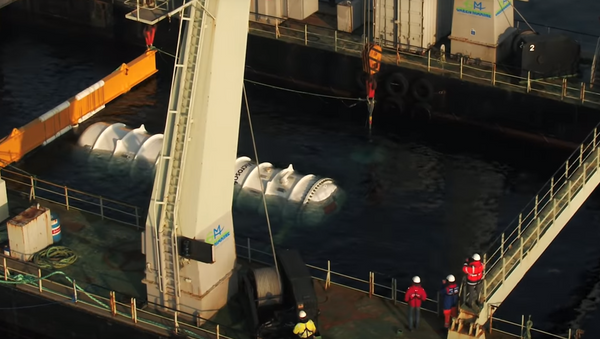On Wednesday, the tech giant announced that the Project Natick data center, a 40-foot-long vessel containing 864 servers, is sitting on the seafloor about 14 miles from the Orkneys, a group of windswept islands to the north of mainland Scotland. The purpose of the data center is to improve internet speeds for people who live near large bodies of water.
"Almost half of the world's population lives near large bodies of water," Microsoft UK's Chief Executive Cindy Rose wrote in a blog post Wednesday.
"Having data centers closer to billions of people using the internet will ensure faster and smoother web browsing, video streaming and gaming, while businesses can enjoy artificial intelligence (AI) driven technologies," Rose added.
The underwater data center is being powered by renewable energy from the European Marine Energy Center's tidal turbines and wave energy converters, which can generate electricity by utilizing the power of waves.
According to Microsoft, the data center, which will sit underwater for an unspecified amount of time, can hold data for up to five years without maintenance.
In addition, the prototype could also save a lot on energy bills since the center will be able to regulate its substantial heat output using the North Atlantic's cold waters.
This is not the first time that Microsoft has experimented with subsea data centers. Proof of concept came from a test carried out from August to November 2015, when the company deployed a similar vessel about 1 kilometer off the US Pacific coast.
In 2017, Microsoft also made a $50 million pledge to use AI to help protect the environment.
"We'll expand seed grants around the world to create and test new AI applications. Since our launch of AI for Earth six months ago, Microsoft has awarded over 35 grants in more than 10 countries for access to Microsoft Azure and AI technology. We will also provide universities, nongovernmental organizations and others with advanced training to put AI to its best use. Already, we're seeing success around the world in projects that are putting AI to work on climate, water, agriculture and biodiversity," Microsoft wrote in a blog post on December 11, 2017.
"Next, as these projects and our work in this area matures, we will identify the projects that show the most promise and make larger investments to help bring them to scale," it pledged.




